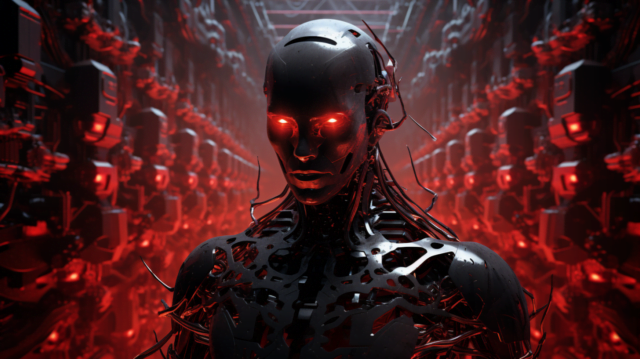
The rapid advancement and widespread availability of artificial intelligence (AI) tools have ushered in an era of unprecedented technological empowerment. From generating creative content to automating complex tasks, AI is revolutionizing various industries and aspects of our lives. However, this democratization of AI also carries a darker side – it is lowering the barriers to entry for malicious activities, particularly in the realm of cybercrime.
In the past, sophisticated hacking required specialized technical skills and knowledge. Today, with user-friendly AI tools readily available, even individuals with limited technical expertise can launch cyberattacks. This article delves into the alarming implications of AI democratization, exploring how AI is being weaponized and what can be done to mitigate the risks.
AI as a Force Multiplier for Cybercrime
AI is not just another tool in the hacker’s arsenal; it is a force multiplier that amplifies their capabilities in several ways:
- Automation: AI automates repetitive and time-consuming tasks, enabling hackers to launch attacks at scale and with greater efficiency. For example, AI-powered bots can scan vast networks for vulnerabilities or launch brute-force attacks against passwords.
- Sophistication: AI enables the creation of more sophisticated and evasive malware. AI algorithms can generate polymorphic malware that constantly changes its code, making it difficult for traditional antivirus software to detect.
- Personalization: AI allows for highly personalized phishing attacks and social engineering scams. By analyzing vast amounts of data on individuals, AI can craft convincing messages that are tailored to specific targets, increasing the likelihood of success.
- Accessibility: User-friendly AI tools are lowering the barriers to entry for cybercrime. Even individuals with limited technical expertise can leverage AI to launch attacks, expanding the pool of potential cybercriminals.
The Alarming Rise of AI-Powered Cyberattacks
The consequences of AI democratization in the context of cybercrime are already being felt:
- Deepfakes: AI-generated deepfakes are being used to spread disinformation, manipulate public opinion, and even impersonate individuals for financial fraud.
- Ransomware: AI-powered ransomware attacks are becoming more sophisticated and targeted, encrypting critical data and demanding hefty ransoms for its recovery.
- Social Engineering: AI-driven social engineering attacks are becoming increasingly convincing, tricking individuals into divulging sensitive information or downloading malware.
- Data Breaches: AI is being used to automate the discovery and exploitation of vulnerabilities, leading to large-scale data breaches and the theft of personal information.
The Need for Proactive Defense
As AI continues to advance, the threat of AI-powered cyberattacks will only intensify. It is crucial to adopt a proactive approach to defense:
- AI for Cybersecurity: Leverage AI to bolster cybersecurity defenses. AI can be used to detect anomalies, identify threats in real-time, and even automate incident response.
- Collaboration: Foster collaboration between industry, academia, and government to share threat intelligence and develop countermeasures.
- Education and Awareness: Educate individuals and organizations about the risks of AI-powered cyberattacks and promote best practices for cybersecurity.
- Regulation: Develop ethical guidelines and regulations for the development and use of AI, particularly in the context of cybersecurity.
AI democratization is a double-edged sword. While it offers tremendous opportunities for innovation and progress, it also poses significant risks, particularly in the realm of cybersecurity. The rise of AI-powered cyberattacks is a stark reminder that technology can be used for both good and evil. It is imperative that we remain vigilant, adapt our defenses, and proactively address the challenges posed by AI in order to safeguard our digital future.











